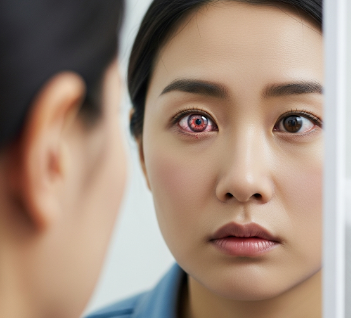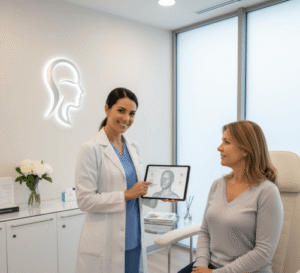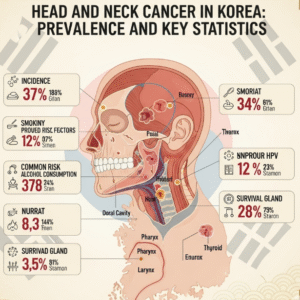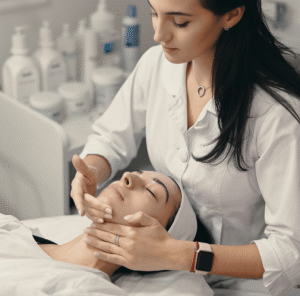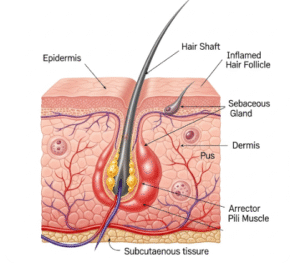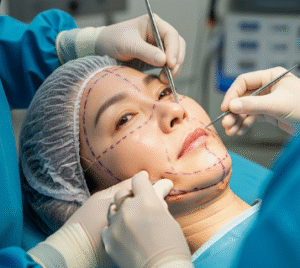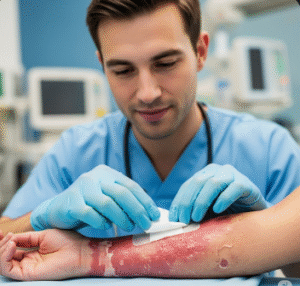Overview
Red eye refers to a condition where the white part of the eye (sclera) appears bloodshot or discolored due to irritation, inflammation, or broken blood vessels. It is a very common symptom that can range from mild and harmless (like dryness or fatigue) to a sign of serious eye disease (such as glaucoma, uveitis, or infection).
In Korea, patients with red eye benefit from advanced ophthalmology services, including same-day eye imaging, slit-lamp examinations, and specialized treatments for infections, allergies, or vision-threatening conditions.
➤ May affect one or both eyes
➤ Often accompanied by pain, discharge, itching, or vision changes
➤ Causes range from simple irritation to serious eye emergencies
➤ Requires urgent medical attention if associated with vision loss or severe pain
Key Facts
➤ Red eye is a symptom, not a disease.
➤ Can result from environmental factors, infections, allergies, or trauma.
➤ Sudden, painful red eye with vision changes is an emergency (e.g., acute glaucoma).
➤ In Korea, rapid diagnostic testing and early treatment help prevent long-term vision damage.
What is Red Eye?
Red eye occurs when blood vessels on the surface of the eye become dilated or broken, making the eye look pink or bloodshot. It can be mild and temporary (e.g., from lack of sleep) or persistent and related to an underlying condition.
What Symptoms Are Related To
Red eye may be accompanied by:
➤ Eye pain or pressure
➤ Tearing or watery discharge
➤ Pus-like discharge (suggesting infection)
➤ Itching and burning (commonly in allergies)
➤ Blurred vision or light sensitivity
➤ Headache and nausea (may indicate glaucoma)
What Causes / Possible Causes
Common causes of red eye include:
➤ Irritation & Lifestyle Factors
➤ Dry eyes
➤ Lack of sleep
➤ Prolonged screen use
➤ Smoke, dust, or chemical exposure
➤ Infections
➤ Viral conjunctivitis (pink eye)
➤ Bacterial conjunctivitis
➤ Keratitis (corneal infection)
➤ Eye Conditions
➤ Allergic conjunctivitis
➤ Blepharitis (eyelid inflammation)
➤ Corneal abrasion or foreign body
➤ Subconjunctival hemorrhage (burst blood vessel)
➤ Serious Causes
➤ Acute angle-closure glaucoma
➤ Uveitis (inflammation inside the eye)
➤ Scleritis (deep eye inflammation, often autoimmune)
➤ Severe eye trauma
When Should I See My Doctor
See a doctor immediately if red eye is associated with:
➤ Sudden or severe eye pain
➤ Loss or blurring of vision
➤ Sensitivity to light (photophobia)
➤ Headache with nausea/vomiting
➤ History of recent eye surgery or injury
➤ Persistent redness not improving within a few days
Care and Treatment
Treatment depends on the underlying cause:
➤ Mild / Home care
➤ Artificial tears for dryness
➤ Cold compresses for irritation or allergies
➤ Resting eyes and limiting screen time
➤ Medical treatment
➤ Antibiotic or antiviral eye drops for infections
➤ Antihistamine or steroid drops for allergic conjunctivitis
➤ Lubricating and anti-inflammatory medications for dry eye syndrome
➤ Emergency treatment
➤ Laser or surgical procedures for acute glaucoma
➤ Steroid therapy for uveitis or scleritis
➤ Surgery or urgent repair in case of trauma
Treatment Options in Korea
Korea is known for advanced ophthalmology care with state-of-the-art diagnostics and treatments:
➤ Advanced Eye Imaging & Diagnosis
➤ Slit-lamp biomicroscopy
➤ Optical coherence tomography (OCT)
➤ Fundus photography & fluorescein angiography
➤ Specialized Treatments
➤ Latest-generation antibiotic & antiviral drops for infections
➤ Immunotherapy and biologics for severe allergic eye disease
➤ Minimally invasive glaucoma surgery (MIGS) for red eye due to glaucoma
➤ World-Class Hospitals
➤ Severance Eye Hospital (Yonsei University) – top center for eye emergencies and surgery
➤ Samsung Medical Center – Ophthalmology – advanced diagnostics and laser treatments
➤ Asan Medical Center – specializes in uveitis, scleritis, and rare autoimmune eye diseases

